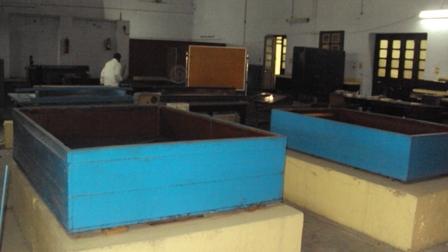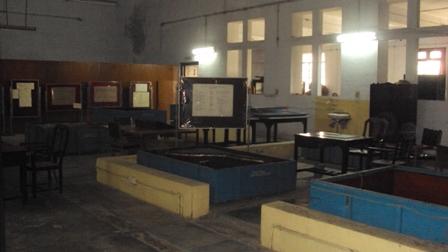

EHDA Laboratory
The ground water research unit-2 of the Irrigation Research Institute, Roorkee is engaged in carrying out 3-D Electro Hydro Dynamic Analogue (EHDA) model study of seepage flow below the complicated design of the various hydraulic structures related to Irrigation projects such as cross drainage works, Barrages, Weirs, Earthen dams etc. The EHDA technique is popularly known as Electrical Analogy Technique. This technique facilitates projects authorities to arrive at safe and economical design of such structures. The technique provides reasonably accurate results for 2-D and 3-D physical modeling of hydraulic structures founded on alluvium and permeable soil for uplift pressures and exit gradients below the floor of the structures. In addition to this, seepage losses from watercourses and minors by Ponding Method are also determined in Canal lining Laboratory of this division so as to achieve safety and optimization of the Canal.
Facilities available at EHDA Laboratory
(i) To study uplift Pressure and Exit Gradient below the foundation of Hydraulic Structures Viz.,
(a) Cross-Regulators
(b) Barrage and Head Regulators
(c) Dams
(ii) To optimize the drainage arrangement behind the lined canal when
(a) Water ta ble is above Full Supply Level.
(b)Water table lies between Full Supply Level and bed elevation.
(iii) To study the seepage losses from canals by flow-net method.
(iv) To determine the free surface of the canal by physical model method.
(v) To determine the Phreatic surface in the canal embankment.
(vi) Testing of suitability of Pressure Release Valves.


